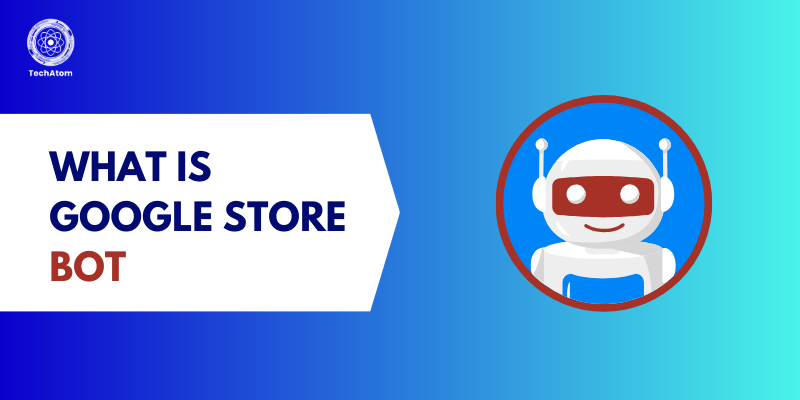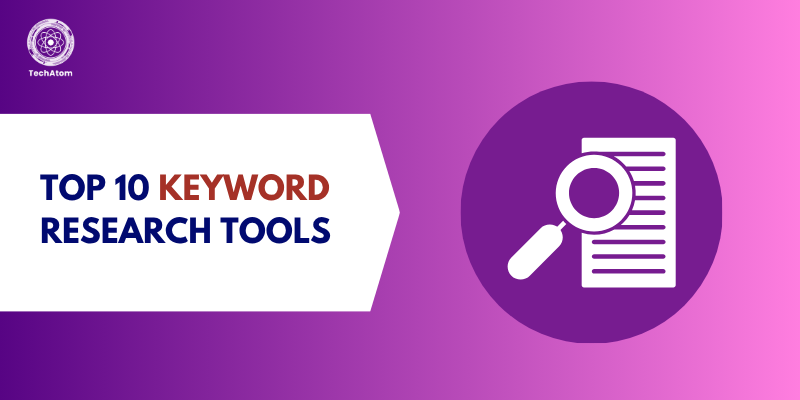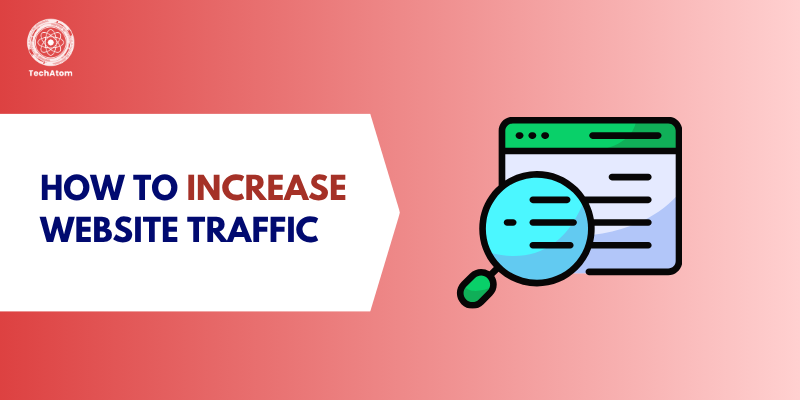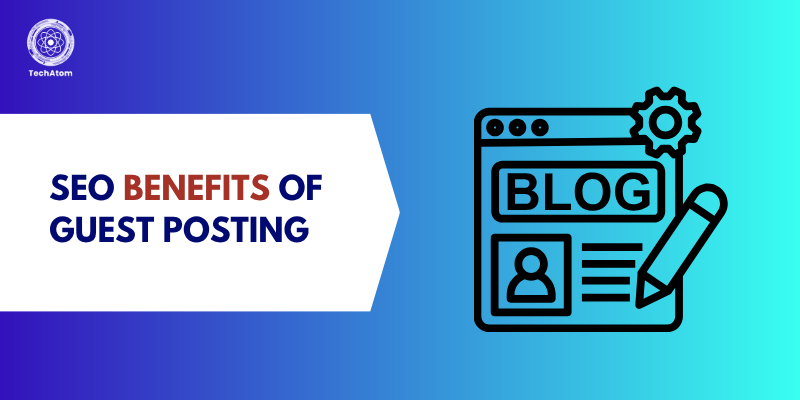Googlebot is most likely the first thing that stumbles your mind when you think of Google crawlers. After all, the key function of the bot is to index webpages for Google Search results.
But what is Google StoreBot? Google StoreBot is a unique, specialized crawler developed especially for e-commerce. It visits your product sites, adds goods to a cart, and mimics the checkout process. This predicts that it doesn’t help to rank your website or index your blog articles.
AI is helping to deliver tasks faster as compared to humans. This is the most significant reason behind brands and customers loving AI bots. Moreover, AI bots are available 24/7 and 365 days to help customers unlike humans who are on lunch break and do not overtime. They can handle thousands of customers and deliver responses instantly at once without any attitude. Customers feel more connected and emotional as AI bots make their shopping journey personalized. Brands don’t have to spend extra on customer service executives or sales persons to manage their customers. AI bots keep all customers happy simultaneously.
Google is transforming the retail sector with artificial intelligence tools like Google Cloud AI, Vision AI, and machine learning. These tools analyze customer behavior, forecast demand, and personalize shopping experiences. Google's expertise bridges the gap between online and offline retail, making it more efficient and customer-focused.
What is Google Store Bot?
Google created the Google StoreBot crawler bot as a specialized web crawler to index and examine content from online retailers. Collecting information on products, prices, availability, and other pertinent e-commerce data is its main objective. By giving consumers accurate and current product listings and comparisons, this data collection contributes to the improvement of Google's shopping services, including Google Shopping.
The bot updates Google's databases, extracts structured data, and visits e-commerce websites in a methodical manner. It helps customers make wise purchases by making sure that product details are up-to-date and thorough. Businesses get improved alignment with customer search intent and increased conversion rates as a result.
How Does Google Store Bot Work?
People's interactions with online retailers are evolving due to the emergence of AI-powered store assistants. By helping customers find products, responding to their questions, and facilitating purchases, the Google Store Bot is intended to make shopping easier. Its natural request processing, data-driven learning, and real-time store system connectivity are its strongest points.
AI & Machine Learning at the Core
In order to adjust to user behavior, the Google Store Bot mainly uses machine learning techniques and artificial intelligence. The bot uses each search, click, and query as training data to improve its recommendations. It eventually learns to identify purchasing trends, predict user preferences, and suggest goods that meet specific requirements. With frequent use, this learning capability guarantees that interactions become increasingly intelligent.
Natural Language Processing (NLP) for Conversations
Natural language processing enables smooth talks. Shoppers can speak or type organically, and the bot can understand purpose, rather than relying on strict directions. After recognizing keywords, sentiment, and purchase-related queries, it replies in an informal manner. This feature lessens friction during the buying experience by making the connection feel more like human support.
Data Collection and Predictive Insights
The bot collects information from past purchases, browsing patterns, and engagement history in the background. It can anticipate what clients might want before they even begin searching thanks to these insights. For instance, when the typical usage cycle is almost over, it can recommend restocking household items or highlighting new arrivals that complement earlier selections. The likelihood of increased conversions and enhanced client loyalty is increased by predictive recommendations.
Linking with Store Databases & Inventories
Google StoreBot provides precise, up-to-date information by integrating with inventory management systems and retail databases. When customers inquire about product availability, shipping schedules, or price adjustments, the bot provides them with the most recent information right away. Additionally, by automating processes like order monitoring, refunds, and customized promotions, this relationship lessens the workload for human support personnel.
Example Use Cases in Real E-commerce Platforms
Similar bots are already being used by e-commerce sites to increase consumer interaction. They can be used by customers to compare products, get personalized product bundles, or seek assistance at the register. Additionally, bots are being used for multilingual support, which enables global retailers to interact with a larger audience. These applications show how a system that is well-integrated can improve user experience while also promoting corporate expansion.
Benefits of Google Store Bot for Businesses
1. Increased Sales & Conversions
AI-driven retail improvements can provide organizations with significant short-term revenue gains. These include a 15–20% improvement in conversion rates from queries linked to shopping and a 25–35% rise in organic Google Shopping traffic. Accurate product representations lessen return rates and increase overall efficiency, while more organic awareness helps cut down on client acquisition expenses. These advantages become strategic advantages over time.
As AI shopping features continue to develop, businesses improve their ability to withstand frequent algorithm changes and market demands while also gaining a durable competitive position. Consistent compliance lowers the chance of policy infractions or account suspensions, and a stronger digital foundation facilitates global expansion and market entry.
2. Improved Visibility and Market Reach
Google Shopping optimization powered by AI can greatly increase brand awareness. Businesses frequently observe a 40% boost in impression numbers, which strengthens their visibility in search engine results. As product listings become more interesting and pertinent, click-through rates from shopping-related searches increase, and improved positioning in competing queries aids in attracting high-intent purchasers. Products have an extra advantage in finding thanks to visibility, which also applies to Google Images shopping features and visual search. Additionally, giving local inventory ads and store pickup options top attention guarantees that businesses may more successfully engage with local customers, bridging the gap between online interest and offline sales.’
As compared to paid advertising, which necessitates ongoing investment, StoreBot optimization produces long-lasting organic visibility gains. After effective implementation, businesses report average gains in organic traffic of 25 – 35% within 3 - 6 months. This growth is expected to continue as Google expands its AI-powered shopping capabilities.
3. Customer Satisfaction and Trust Establishment
Accurate and transparent product data helps reduce customer frustration by eliminating pricing discrepancies and ensuring reliable availability information. Shoppers develop greater trust when they see consistent shipping details that set the right expectations, along with verified contact information that makes customer service easy to reach. Strong quality assurance further safeguards the shopping experience by preventing misleading advertisements and avoiding disappointments, ultimately fostering loyalty and repeat business.
Consumers who use Google Shopping to identify products with accurate StoreBot data convert at rates that are 15–25% higher than those who come across inconsistencies or false information. Reduced friction throughout the purchasing process and greater confidence in the buying experience are the causes of this improvement.
4. Market Positioning and Competitive Advantage
Businesses who maintain high-quality product data have a significant edge over rivals that fail to consider StoreBot requirements. Higher customer satisfaction ratings and the creation of favorable reviews are directly correlated with superior product detail accuracy. Return rates decrease when descriptions or specifications are less inaccurate, which helps merchants save money and increase productivity. In addition to enhancing brand reputation, consistently dependable purchasing experiences help establish companies as viable options in cutthroat marketplaces.
Beyond short-term benefits, investing in StoreBot compliance has long-term benefits. Companies are given preferential access to new integrations across shopping platforms and are more qualified for Google's developing AI shopping features. Additionally, this base guarantees greater preparedness for the trend toward voice shopping and visual search, which are both becoming more popular among contemporary consumers. Companies can lower their risk of policy breaches or account suspensions by upholding strict compliance standards, ensuring a steady and prepared presence in digital commerce.
5. Impact of Revenue and ROI Considerations
Businesses frequently claim revenue gains of 20–30% as a result of improved exposure in search results, demonstrating the obvious financial benefits of optimizing for Google Shopping. Increased organic reach lowers the cost of acquiring new customers, enabling merchants to draw in customers without depending as much on sponsored advertising. Customers are more inclined to make larger purchases as trust is increased by accurate and trustworthy product data, which raises average order values. In the long run, expansion is more cost-effective because retaining visibility requires less marketing expenditure.
These enhancements produce long-term strategic advantages in addition to immediate income increases. Businesses can create long-lasting competitive advantages that get stronger as Google Shopping grows. Additionally, stronger market positioning protects performance in unpredictable circumstances by providing resistance against frequent algorithm upgrades and economic swings. Furthermore, companies are better equipped to enter new markets and expand internationally when they have a more dependable and scalable basis, which guarantees that growth prospects will continue for a very long time.
Benefits of Google Store Bot for Customers
Google Store Bot combines speed, customisation, and dependability to make shopping easier and more enjoyable.
- Faster Shopping Experience
The ability to shop more quickly is among the most obvious advantages. Customers can ask questions or enter what they're looking for instead of perusing several pages. The bot saves time and lessens frustration by presenting pertinent products in a timely manner.
- 24/7 Support Availability
24/7 availability is another significant benefit. Consumers no longer have to wait for customer service representatives or business hours to answer their questions. The bot can track orders, answer queries, give shipment information, and assist users with the purchasing process, whether it's late at night or during a hectic day. This consistent availability increases customer happiness and fosters trust in the store.
- Personalized Deals and Offers
Another benefit is the customized offers and discounts. The Store Bot can recommend sales and discounts based on user preferences by examining browsing patterns and past purchases. Offers that are pertinent to the needs of the customer make them feel valued, which promotes loyalty and repeat business. Customers find things they might have otherwise overlooked thanks to this individualized approach.
- Secure and Easy Checkout
Easy checkout and security are equally vital. By safeguarding payment information and personal data, the Google Store Bot makes sure that transactions are completed in a secure setting. Simultaneously, the procedure is streamlined, eliminating pointless procedures that can deter potential customers. A seamless checkout process reduces cart abandonment and promotes more completed orders.
Google Store Bot vs Google Bot
Developing a successful e-commerce SEO strategy requires an understanding of the distinctions between GoogleBot and StoreBot. Many companies treat these crawlers the same way, which results in less-than-ideal setups and lost chances.
This difference significantly affects how you optimize your Google Shopping campaign:
Variations in Content Strategy
- Googlebot prioritizes the quality and relevancy of informational content.
- StoreBot places a high priority on transactional data accuracy and the quality of the purchasing experience.
- Both need optimization, but their goals and methods differ.
Technical specifications
- The site structure and content pages must be accessible to Googlebot.
- StoreBot needs complete access to all shopping features, such as the checkout and cart.
- Several facets of your Google visibility can be affected by blocking either crawler.
Performance Monitoring
- Keep an eye on Googlebot for search ranks and conventional SEO indicators.
- Monitor StoreBot's performance, product visibility, and data accuracy on Google Shopping.
- For thorough monitoring, separate analytics and reporting systems might be required.
Challenges & Limitations of Google Store Bot
E-commerce companies commonly face difficulties with Google Store Bot data inconsistencies and performance problems, even with appropriate initial setup. Maintaining optimal Google Shopping exposure and avoiding income loss requires knowing how to promptly detect and fix these issues.
Resolution of Pricing Inconsistencies
Data inconsistencies Most frequently, pricing discrepancies across several systems are the subject of troubleshooting:
Typical Problems with Pricing
- Website-based promotions that don't show up in Google Shopping results.
- Inaccurate price displays for overseas clients due to currency conversion errors.
- Differences in tax calculations between stated pricing and online checkout.
- Sale pricing that has ended but are still displayed in the search results.
- Regional pricing differences are not adequately conveyed to StoreBot.
Issues with Availability and Inventory
Problems with availability verification might negatively affect Google Shopping performance and customer trust:
Common Inventory Issues
- Google Shopping displays products as available, yet the website indicates that they are out of stock.
- StoreBot is not adequately informed of the backorder status, and regional availability constraints are not displayed in the shopping results.
- Products that have been discontinued nevertheless show up in search results.
Organized Data and Technical Problems
Data that is structured Issues with Google Shopping's implementation may make it difficult for StoreBot to comprehend product details:
Typical technical issues
- Faulty JSON-LD structured data that results in parsing mistakes.
- Schema markup is lacking necessary product properties.
- Data formatting errors between visual displays and structured data.
- StoreBot cannot access JavaScript-generated material due to technical difficulties particular to mobile devices that impact bot crawling.
Future of Google Store Bot
The rise of the Google Store Bot is only the start of a profound shift in the way e-commerce functions in a digital ecosystem that is becoming more and more AI-driven. Which companies prosper in the upcoming generation of internet commerce will depend on their ability to comprehend these new trends and get ready for them.
Google's AI Shopping Features Integration
StoreBot data is now positioned as a critical element driving next-generation shopping experiences thanks to Google's recent introduction of sophisticated AI shopping features:
Integration of AI-Powered Shopping Agents:
- The extensive product data collection capabilities of StoreBot are crucial to Google's "Shop with AI" features.
- Dynamic AI suggestions are made possible by real-time pricing and inventory verification.
- Multi-dimensional data analysis from StoreBot is used by product comparison algorithms.
- StoreBot uses its findings from behavioral modeling to create personalized shopping experiences.
Improved Visual Search Features
According to Google's AI and machine learning research, combining StoreBot data with Google's visual search engine opens up previously unheard-of possibilities for product discovery.
- Product matching based on images with StoreBot's validated product catalogs.
- Enhanced visual search results with up-to-date availability and pricing information.
- Accurate product specs that adhere to WebXR standards enable cross-platform product recognition across Google Lens, Images, and retail augmented reality shopping experiences.
Advanced Technology Integrations
The role of StoreBot has significantly expanded across several technological platforms, according to trends in AI shopping:
Evolution of Voice Commerce
- StoreBot-verified product information is frequently used in Google Assistant buying searches.
- Accurate inventory and pricing in real time are necessary for voice-activated purchasing procedures.
- The extensive data gathering provided by StoreBot is advantageous for natural language product searches.
- According to Google's voice search optimization criteria, consistent product availability and specification data are necessary for smart home integration.
Predictive Commerce Capabilities
StoreBot data is starting to be used by sophisticated machine learning algorithms for:
- Using trends in consumer purchasing behavior to predict inventory management.
- Competitive analysis-based dynamic pricing suggestions.
- Forecasting seasonal demand with previous crawler data.
- Simulations of the shopping journey improve models for predicting customer behavior.
Market Development and Its Strategic Consequences
Trends in e-commerce automation point to significant adjustments in the way online shopping functions:
Self-governing shopping platforms
- AI systems that decide what to buy for customers.
- Systems for automated replenishment that demand flawless data fidelity.
- Algorithms for business-to-business procurement powered by StoreBot data.
- Using real-time market intelligence to optimize the supply chain.
International Market Growth
- The expansion of international e-commerce necessitates advanced localization.
- Experiences with cross-border shopping that need adherence to regulations and currencies.
- Integration of multi-platform marketplaces throughout Google's growing ecosystem.
- Capabilities for regional modification according to local market conditions.
Getting Ready for Upcoming Developments
E-commerce companies' future-proofing plans need to focus on a few crucial areas:
Evolution of Technical Infrastructure
- Systems that can grow to accommodate more bot traffic and data needs.
- Real-time data synchronization is supported by sophisticated API connectors.
- New crawling technologies are accommodated by improved security protocols.
- Mobile-first optimization in anticipation of sustained growth in smartphone commerce.
Enrichment and Quality of Data
- Extensive databases of product attributes that support AI-driven characteristics.
- Improved visual search technology-optimized images and videos.
- Accurate product matching and comparison are made possible by comprehensive specification data.
- AI recommendation engines combined with customer review and rating systems.
Planning a Strategic Business
- Investing in technologies that enhance Google's ecosystem for AI shopping.
- Building up internal resources to handle complicated data needs.
- Partnership tactics that are in line with new technological platforms.
- Superior data quality and customer experience are the foundations of competitive positioning.
Long-Term Strategic Aspects to Take into Account
Businesses who understand Google Store Bot optimization as a component of a larger shift toward AI-driven commerce will be the ones that rule future e-commerce markets:
Development of Competitive Advantage
- Sustainable market positioning is produced by early adoption of developing technology.
- As AI systems develop, superior data quality becomes more and more valuable.
- Businesses in automated retail environments are distinguished by their exceptional customer experience.
- Bot optimization technical know-how transfers into more extensive AI commerce capabilities.
Opportunities for Market Leadership
- Companies who are adept at integrating StoreBots benefit from voice commerce, visual search, and AI-powered platforms.
- Better product data makes it possible to participate in new marketplaces and shopping channels.
- Expertise in technical optimization opens doors for global expansion and market expansion.
- Accurate, dependable buying experiences increase the value of customer trust.
One of the biggest potential in contemporary e-commerce is the convergence of Google Store Bot with developing AI technologies. As the landscape of digital commerce continues to change toward increasing automation and intelligence, companies who make the investment to comprehend and optimize these systems now will be in a position to reap disproportionate benefits.
Frequently Asked Questions
1. What is Google Store Bot used for?
Google Store Bot, Google's specialized verification technology is used for e-commerce data accuracy throughout the shopping ecosystem. Its main objective is to guarantee that the availability, cost, and product details shown in Google purchasing results appropriately represent the real-world purchasing experience on merchant websites. StoreBot verifies the quality of transactional data by simulating actual customer journeys, in contrast to conventional web crawlers.
2. How does Google Store Bot work in online shopping?
From the product information page to the cart page and finally to the checkout page, the crawler attempts to navigate your whole checkout process. It compiles all pertinent information from this procedure, such as:
- Cost of shipping and product
- Local and internet accessibility
- Coupons' validity
- Time of delivery
- Countries of delivery
- Logistics
- Methods of payment
- Secure payment or address
- Framework for shopping
- Affiliate domains
- Contact details
- Meta data
3. What are the key features of Google Store Bot?
Real-time responses, natural language search, and intelligent product recommendations are all provided by the Google Store Bot. It provides precise pricing, availability, and shipping information by integrating with store databases. Personalized offers, simple checkout processes, and round-the-clock support are also provided to customers, ensuring a seamless purchasing experience.
4. Can businesses integrate Google Store Bot into their websites?
It is possible for companies to incorporate Google Store Bot into their online stores and websites. To provide precise and pertinent information, it integrates with inventory management systems, product catalogs, and customer information. This interface increases overall productivity by automating customer interactions.
5. How does Google Store Bot benefit e-commerce stores?
Better conversion rates, more traffic, and less customer support effort are all advantages for e-commerce sites. By guaranteeing precise product facts, the bot lowers acquisition costs through organic reach, increases product visibility in Google Shopping, and decreases return rates. By providing individualized experiences, it also strengthens client loyalty.
6. Does Google Store Bot provide customer support?
Yes, it is capable of handling customer service duties like responding to inquiries about products, giving order updates, and helping with exchanges or refunds. Its 24/7 availability cuts down on wait times and guarantees that customers obtain precise, timely support without depending entirely on human workers.
7. Is Google Store Bot different from regular chatbots?
Indeed, Google Store Bot was created especially for online shopping and sales. It specializes in product discovery, recommendations, checkout assistance, and integration with retail systems, in contrast to standard chatbots that concentrate on general discussions. This makes it more effective for online retail environments.




